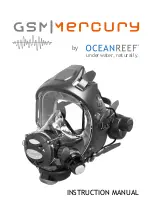
DESIGNER’S HANDBOOK 4189350049C EN
Page 163 of 206
It is possible to change the settings for each COM port independently. A XDi-N with two NX2 modules mounted will
have 6 COM ports that can be configured independently.
Changing bitrate can be used to increase the data bandwidth, default NMEA0183 is 4800 bps.
11.13.1.2
High speed NMEA input / output
To comply with IEC 61162-2 you must change the Baud rate to 38.400 bps.
In a customized library the default NMEA bitrate can be setup differently for one or more input ports, this can
sometimes be useful to connect a Gyro-compass that often have a high speed NMEA output port.
11.13.1.3
NMEA talker ID
NMEA ID is the NMEA0183 talker ID. This can be changed to one of the other valid NMEA talker IDs.
In some cases, the connected system requires a specific talker ID to accept the NMEA data sentence.
XDi supports all the relevant talker IDs defined in the IEC 61162-1 standard.
Please note that XDi can send NMEA data with different talker IDs depending on which COM port is used. This can
be useful in cases where different data of the same type (same sentence name) is transmitted on the same NMEA
communication line and where the receiver must be able to distinguish between different data of the same type.
11.13.2 NMEA output setup
XDi can be setup to transmit some of its internal data in a NMEA0183 sentence format on a serial output on the
NX1 or NX2 extension module. You can find a list of data types that can be supported if setup in the VS profile for
the selected virtual indicator. It can for example be an XDi 144D with standard RPM library and analogue 4-20mA
input that is setup to be able to share the NMEA $xxRPM sentence if a NX module is attached. Where xx is the
NMEA talker ID for the COM port that is used to transmit the sentence.
















































